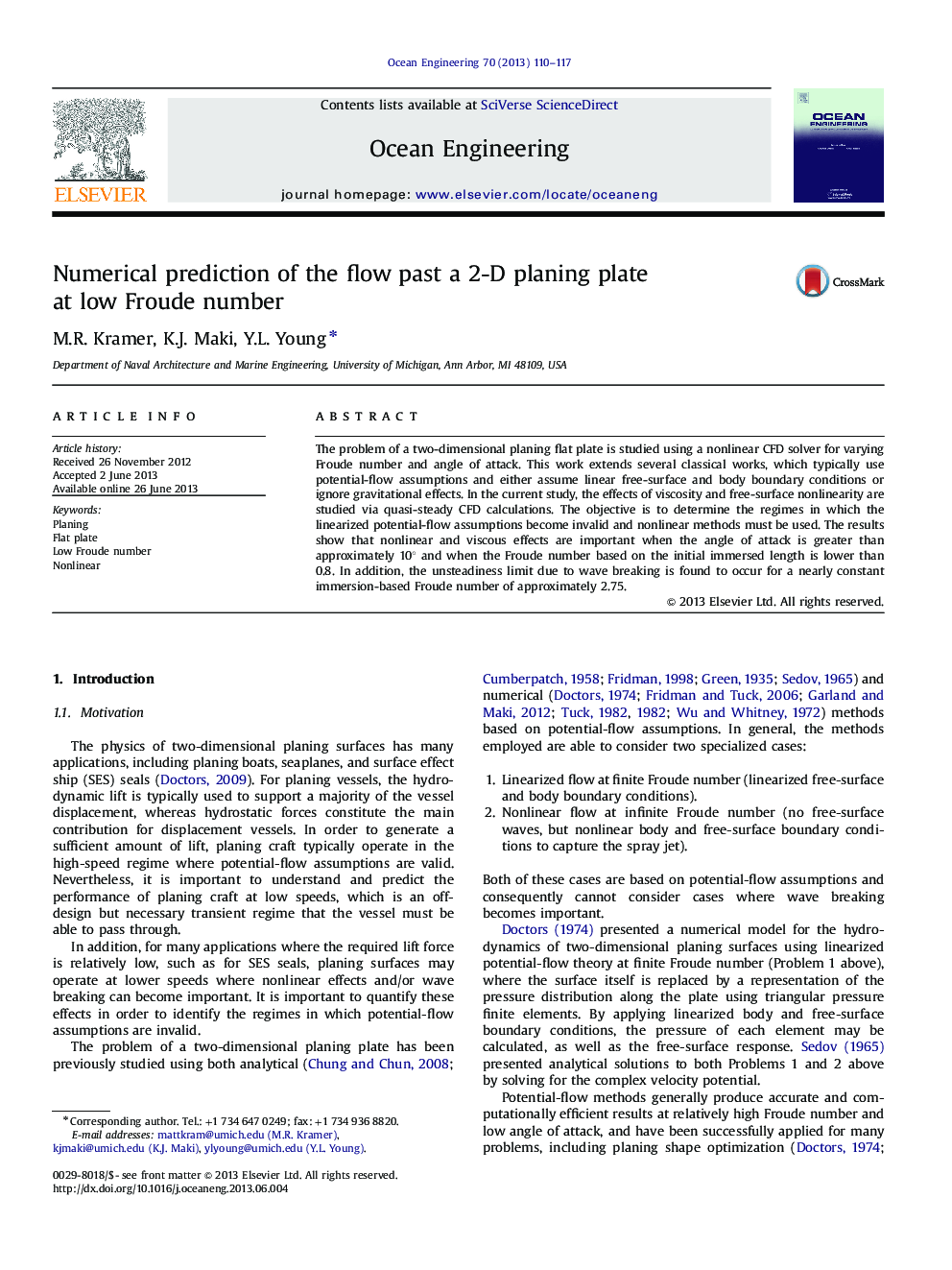| Article ID | Journal | Published Year | Pages | File Type |
|---|---|---|---|---|
| 1725833 | Ocean Engineering | 2013 | 8 Pages |
•Flow past a 2D planing plate solved using CFD for varying speed and angle of attack.•Results compared to linearized potential flow to determine when assumptions are invalid.•At low Froude number and high angle of attack nonlinear effects are important.•Potential-flow method accurate for angle of attack <10°<10° and Froude number >0.8>0.8.•Wave breaking limit found at constant immersion-based Froude number of 2.75.
The problem of a two-dimensional planing flat plate is studied using a nonlinear CFD solver for varying Froude number and angle of attack. This work extends several classical works, which typically use potential-flow assumptions and either assume linear free-surface and body boundary conditions or ignore gravitational effects. In the current study, the effects of viscosity and free-surface nonlinearity are studied via quasi-steady CFD calculations. The objective is to determine the regimes in which the linearized potential-flow assumptions become invalid and nonlinear methods must be used. The results show that nonlinear and viscous effects are important when the angle of attack is greater than approximately 10° and when the Froude number based on the initial immersed length is lower than 0.8. In addition, the unsteadiness limit due to wave breaking is found to occur for a nearly constant immersion-based Froude number of approximately 2.75.
